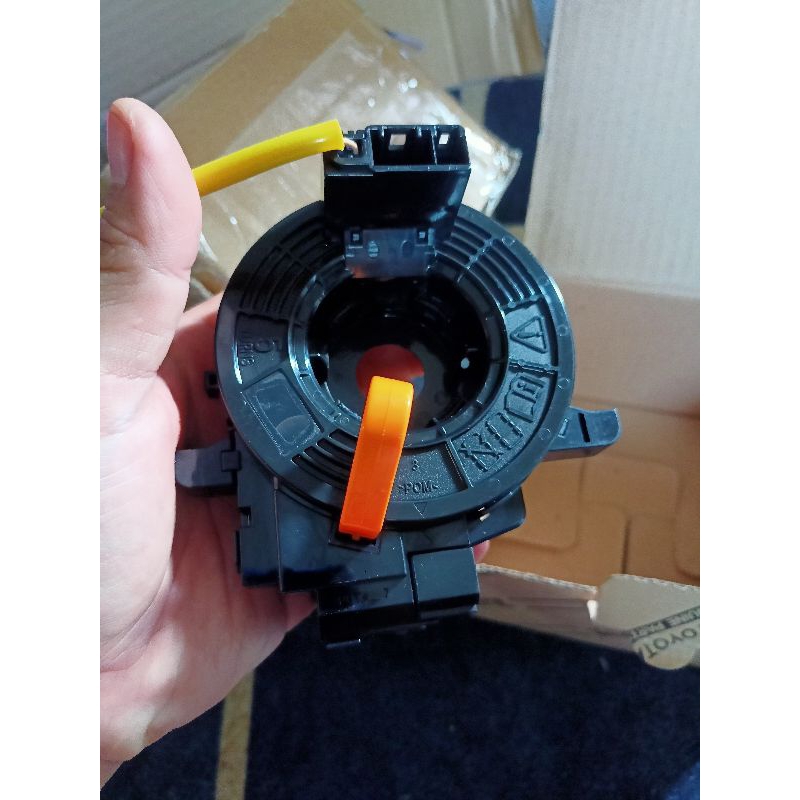In modern cars, security and functionality go in tandem, with different elements functioning together to create a smooth driving experience. Amongst these crucial components is the clock spring, a device that often goes ignored until it leads to problems. Grasping toyota clock spring is important for any car owner, as it plays a pivotal role in the operation of safety systems, especially those related to the airbag system and steering wheel controls.
The clock spring is found inside the steering column and acts as a compliant connector between the vehicle's electronic systems and the steering wheel. It allows for the continuous transmission of signals while allowing the wheel to rotate. In cars like Toyota, where advanced features such as audio controls, cruise control, and airbags are fitted into the steering wheel, the operation of the clock spring becomes even more critical. Understanding how this element works can help you recognize its importance and recognize when an issue may be amiss.
What is a Clock Spring?
A clock spring is an essential component in contemporary vehicles that enables the connection between electrical systems and moving parts, particularly in the steering column. This device is chiefly responsible for maintaining the electrical connection for features such as the airbag, horn, and steering wheel controls while allowing the steering wheel to turn freely. It works by employing a flat, coiled ribbon of conductive substance that coils and uncoils as the steering wheel rotates.
In many vehicles, including brands from Toyota, the clock spring is appropriately placed within the steering wheel assembly. Its design allows for a consistent and adaptable electrical connection, aligning with the various movements of the steering wheel. When the driver maneuvers the steering wheel, the clock spring expands, and when the wheel is turned back, it coils back again, all while keeping the electrical circuits intact. This capability is vital, as it guarantees that critical safety features like airbags remain active during vehicle maneuvers.
If the clock spring malfunctions, it can lead to a number of issues including non-functional airbags, unreactive steering controls, or warning lights on the dashboard. Given its vitality, comprehending the role of the clock spring in a vehicle helps guarantee drivers are aware of its role in the overall safety and usability of the car. Regular inspections can help identify any potential problems with the clock spring in vehicles, particularly in popular brands like Toyota.
The Way the way the Clock Spring Functions
This clock spring is an essential component of contemporary vehicles, designed to preserve electrical associations amongst the steering wheel and multiple systems within the car. It is a pliable, spiral-wrapped construction that allows for the rotation of the steering wheel and ensuring that the necessary electrical signals flow. This means that as you turn the wheel, the clock spring unwinds and rewinds to adjust to the movement without losing connectivity.

Inside that clock spring, there are current-carrying tracks that align with matching contacts on the steering column. As you spin the steering wheel, the clock spring turns accordingly, and these tracks form a circuit that activates vital features like the airbag system, horn, and steering wheel controls. This functionality is crucial for protection and convenience, as it ensures that the driver can readily access controls without losing the ability to signal or respond in the event of an emergency.
Toyota clock springs, particularly, are known for their reliability and design tailored to various models in the lineup. They are engineered to withstand the demands of steering movement while ensuring that passengers are safe with proper airbag deployment systems. An understanding of how the clock spring works can help vehicle owners in noticing signs of wear or malfunction, leading to timely repairs and preserving vehicle safety.
Common Issues with Toyota Clock Springs
The Toyota clock springs can encounter various difficulties over time, frequently due to wear and tear from regular use. One frequent issue is the degradation of the electrical contacts inside the clock spring. Over time, these contacts can become damaged or corroded, leading to intermittent or complete loss of operation for components such as the safety airbag, controls on the steering wheel, and horn. This not only influences ease of use but can also present dangerous situations.
A further, frequent issue is the physical damage that can happen to the clock spring. This damage may stem from collisions, such as a crash or even faulty steering wheel installation after maintenance. When the clock spring is mechanically damaged, it can disrupt the communication between the steering wheel and the vehicle's electrical systems. This can lead to warning lights on the display, primarily if the safety airbag is compromised, demanding swift action.
Lastly, some Toyota's clock springs may fail earlier than expected, often due to defective parts or substandard installation. In such cases, drivers might observe symptoms like odd noises when turning the steering wheel, or they may find that some functions cease to work without prior indication. Routine maintenance checks can help spot preliminary symptoms of clock spring difficulties, ensuring that drivers can tackle them before they lead to more major problems.
